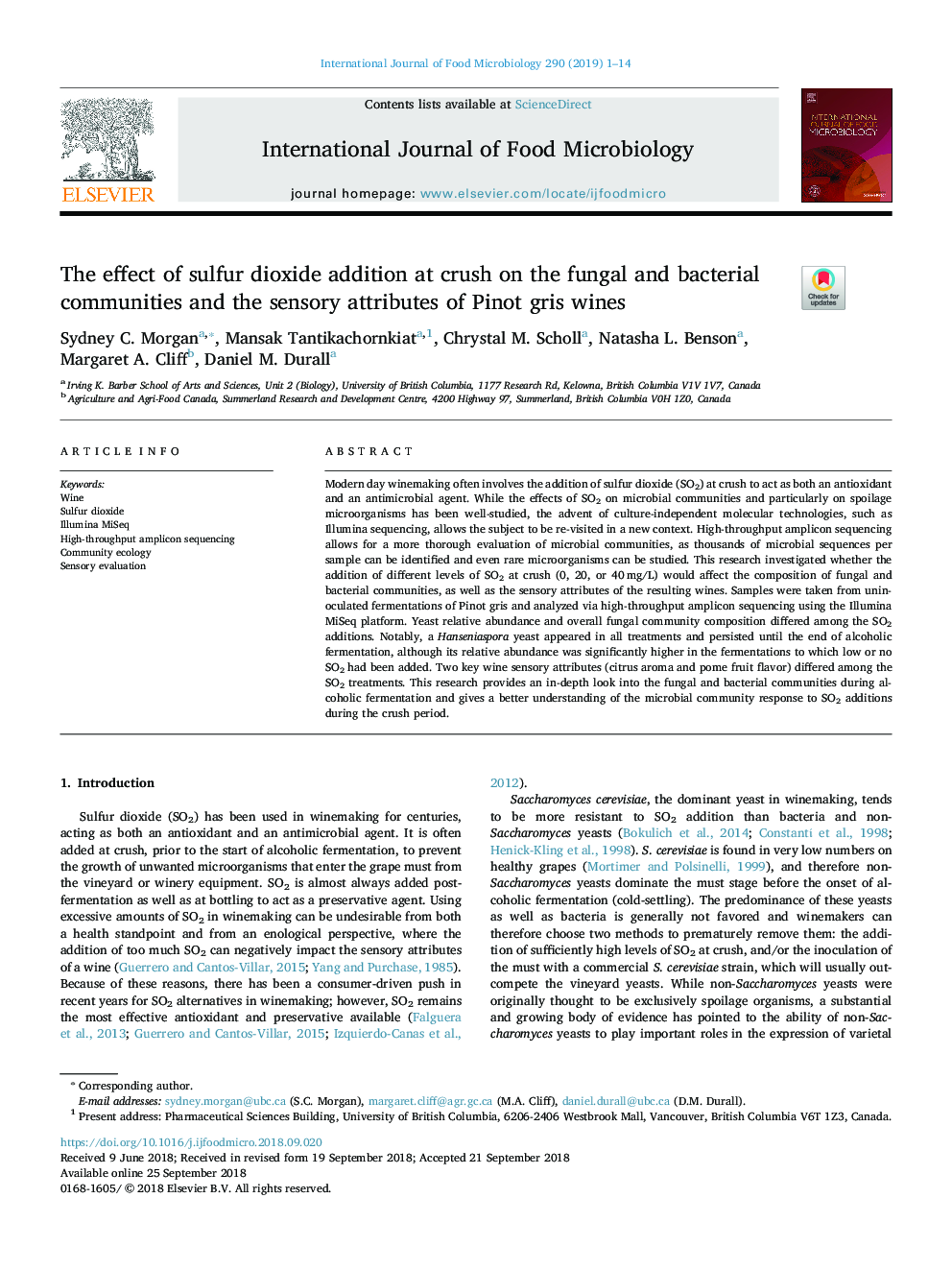| Article ID | Journal | Published Year | Pages | File Type |
|---|---|---|---|---|
| 11016771 | International Journal of Food Microbiology | 2019 | 14 Pages |
Abstract
Modern day winemaking often involves the addition of sulfur dioxide (SO2) at crush to act as both an antioxidant and an antimicrobial agent. While the effects of SO2 on microbial communities and particularly on spoilage microorganisms has been well-studied, the advent of culture-independent molecular technologies, such as Illumina sequencing, allows the subject to be re-visited in a new context. High-throughput amplicon sequencing allows for a more thorough evaluation of microbial communities, as thousands of microbial sequences per sample can be identified and even rare microorganisms can be studied. This research investigated whether the addition of different levels of SO2 at crush (0, 20, or 40â¯mg/L) would affect the composition of fungal and bacterial communities, as well as the sensory attributes of the resulting wines. Samples were taken from uninoculated fermentations of Pinot gris and analyzed via high-throughput amplicon sequencing using the Illumina MiSeq platform. Yeast relative abundance and overall fungal community composition differed among the SO2 additions. Notably, a Hanseniaspora yeast appeared in all treatments and persisted until the end of alcoholic fermentation, although its relative abundance was significantly higher in the fermentations to which low or no SO2 had been added. Two key wine sensory attributes (citrus aroma and pome fruit flavor) differed among the SO2 treatments. This research provides an in-depth look into the fungal and bacterial communities during alcoholic fermentation and gives a better understanding of the microbial community response to SO2 additions during the crush period.
Related Topics
Life Sciences
Agricultural and Biological Sciences
Food Science
Authors
Sydney C. Morgan, Mansak Tantikachornkiat, Chrystal M. Scholl, Natasha L. Benson, Margaret A. Cliff, Daniel M. Durall,
